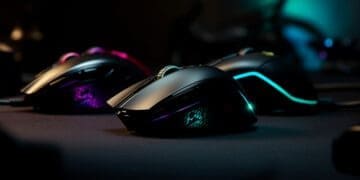We’ve witnessed gaming genres evolve dramatically over the past decade, but nothing has captured our attention quite like the emergence of first person shooter MOBA games. This innovative hybrid genre combines the precise aim mechanics we love from traditional shooters with the strategic depth of multiplayer online battle arenas.
The fusion of these two popular gaming styles has created something entirely new. While we used to choose between fast-paced shooter action or strategic team-based combat, modern hybrid titles now let us experience both simultaneously. These games demand quick reflexes and tactical thinking, pushing us to master both individual combat skills and team strategy.
In this article, we’ll explore how this genre transformation happened, examine the core mechanics that make it work, and look at how developers are tackling the unique challenges of creating these complex gaming experiences.
The Evolution of Genre Hybridization

When we look at the gaming landscape today, we’re seeing an unprecedented fusion of genres that was once thought impossible. The marriage of first-person shooters and MOBAs represents one of the most ambitious genre-mixing experiments we’ve witnessed in gaming history.
Traditional FPS vs MOBA elements
We’ve observed that traditional FPS games emphasize moment-to-moment aiming and shooting skills, with players having significant potential to carry matches solo. In contrast, MOBAs demand patience and well-executed team strategies, typically playing out over 30-45 minute matches. This fundamental difference in gameplay philosophy created an interesting challenge for developers looking to bridge these worlds.
What makes this hybrid particularly fascinating is how it combines two seemingly contradictory gaming styles. While FPS games provide visceral action and immediate power fantasy, MOBAs offer complex systems and strategic depth.
Key mechanics that bridge the gap
The breakthrough in combining these genres came through innovative ability-based combat systems. We’re seeing games implement what developers call “hero shooter” mechanics, where characters possess distinct personalities and unique powers. This approach allows for:
Quick-paced leveling systems where players gain new abilities every few minutes
Flexible character builds that offer multiple playstyles rather than simple stat boosts
Team composition dynamics that encourage strategic cooperation
Technical innovations enabling hybrid gameplay
The technical evolution making this genre possible has been remarkable. Modern game development tools and engines have made creating these complex hybrid experiences more accessible. We’re witnessing advancements in scalability features that allow developers to handle the intricate requirements of combining fast-paced shooting with strategic MOBA elements.
What’s particularly exciting is how these games are implementing social features and reward systems. The integration of these elements has become crucial in maintaining player engagement, while still preserving the core shooting mechanics that FPS players expect.
The development community has embraced this challenge with innovative solutions. For instance, some developers are exploring ways to translate traditional MOBA laning phases into 3D environments, considering factors like cover mechanics and vertical gameplay. These technical solutions are creating entirely new ways for us to experience competitive gaming.
Core Game Design Elements

Let’s dive into the fundamental elements that make first-person shooter MOBA games truly unique. We’re seeing a fascinating blend of mechanics that create an entirely new gaming experience.
Ability-based combat systems
In these hybrid games, we’ve noticed that limited ability usage adds significant depth to the combat experience. Whether through cooldowns or resource management, we must carefully decide when to use our skills. This strategic layer transforms what could be simple shooting mechanics into a more nuanced combat system.
The beauty of this system lies in its ability to create what we call “meaningful moments” – where players must balance their shooting skills with tactical ability usage. We’re finding that successful games in this genre offer players multiple strategies to contribute to their team’s success.
Map design and objective mechanics
The map design in these hybrid games represents a masterful balance of traditional MOBA elements with shooter-friendly spaces. We’re seeing innovative approaches where maps feature:
Strategic lanes with varying lengths and tactical importance
Objective zones that create natural points of conflict
Vertical elements that complement shooting mechanics
What makes these maps particularly effective is how they support both strategic planning and moment-to-moment gameplay. We’ve observed that the best designs encourage both macro-level strategy and micro-level combat encounters.
Character progression within matches
The progression system in these games offers a unique twist on traditional gaming mechanics. We’ve found that effective progression systems help achieve multiple goals by structuring play, establishing reward criteria, and compelling us to keep moving forward.
What’s particularly interesting is how these games handle character development. The progression needs to feel meaningful without overwhelming new players. As we’ve learned, giving players too many options too quickly leads to confusion, while limiting options too severely results in boredom.
We’re seeing a careful balance where games allow players to progress in stages, mastering existing abilities before introducing new ones. This staged approach to progression creates what we call an “upward spiral of engagement,” where each match offers opportunities for both immediate success and long-term growth.
The most successful implementations we’ve observed combine both skill-based and progression-based gameplay elements. This duality ensures that while players can advance through investment of time, the core shooting mechanics remain crucial to success.
Balancing Shooter Skills with MOBA Strategy

Training in both first person shooter MOBA games requires a unique approach to mastering multiple skill sets simultaneously. We’re discovering that success in this hybrid genre demands a careful balance of different gaming competencies.
Aim mechanics vs ability timing
In our experience with these games, we’ve found that mechanical shooting skills remain crucial while adding layers of strategic depth. What’s fascinating is how FPS players often find it easier to carry games in pure shooter environments compared to hybrid titles. This difference stems from the added complexity of timing abilities and coordinating with teammates.
We’ve observed that enhancing decision-making skills becomes paramount in these hybrid games. Players must analyze enemy movements and adapt strategies in split seconds, making this genre particularly demanding on cognitive abilities.
Resource management importance
Resource management adds another crucial layer to the gameplay experience. We’ve learned that managing various in-game resources becomes a critical factor in determining match outcomes. This system creates what we call “imperfect decisions” – choices made with incomplete information that lead to interesting strategic depth.
The complexity of resource systems can be overwhelming at first. We’re seeing games implement various counters and management systems that require careful monitoring and strategic deployment. This creates a psychological element where players must balance aggressive plays with resource conservation.
Team composition dynamics
Team composition in hybrid games presents unique challenges that we haven’t seen in traditional shooters or MOBAs alone. In standard MOBA matches, we’ve observed that teams must achieve specific objectives while maintaining strategic formations across three lanes.
What makes team dynamics particularly interesting in these games is the need for:
Strategic hero selection based on team needs
Balance between damage dealers and support roles
Coordination between different player specialties
We’ve found that successful teams don’t just rely on individual shooting skills – they understand the importance of role distribution and strategic positioning. This hybrid approach requires players to master both mechanical skills and strategic team play, creating a more complex and rewarding gaming experience.
The evolution of these games has taught us that while strong mechanical skills form the foundation, well-executed strategy often determines the outcome of matches. This delicate balance between individual skill and team coordination continues to define the genre’s unique appeal.
Developer Approaches to the Hybrid Genre

In exploring the developer landscape of first person shooter MOBA games, we’re witnessing fascinating approaches to this challenging hybrid genre. Major studios and industry veterans are bringing unique perspectives to solve complex design challenges.
Valve’s Deadlock philosophy
We’ve seen Valve take an intriguing approach with Deadlock, which fundamentally challenges our perception of shooter-MOBA hybrids. The game emphasizes abilities and ultimates over pure shooting mechanics, making it what we might call an “anti-shooter”. In Deadlock’s design philosophy, guns serve as complementary tools rather than the primary focus, with fights revolving around ability timing and positioning.
What’s particularly interesting is Valve’s unconventional marketing strategy. We’ve observed them taking a silent approach to Deadlock’s release, creating an organic buzz through community discovery. This strategy has proven effective, with players actively seeking out Steam keys through online communities.
Riot veterans’ influence
When we look at industry veterans’ involvement in the genre, we’re seeing some sobering realities. Experience in one gaming environment doesn’t always translate seamlessly to new challenges. We’ve observed that many veteran-led studios face significant hurdles when adapting to different development environments.
The challenge lies in rebuilding craft and processes. As we’ve learned, success in one team or environment doesn’t guarantee success in another, particularly when dealing with hybrid genres that require fresh approaches to game design.
Learning from past successes and failures
Through our analysis of the industry, we’ve identified several key learnings in hybrid game development:
Market research is crucial for understanding player preferences
Successful hybridization requires careful balance of existing mechanics
Development approaches can either transform existing games or build from scratch
We’re finding that the most successful hybrid games come from developers who understand both genres deeply. The challenge isn’t just in combining mechanics, but in creating something that feels natural and engaging to players from both gaming backgrounds.
What’s particularly fascinating is how these games are broadening their appeal. We’re seeing developers invest in innovative gameplay mechanics to reach wider audiences. This approach has proven especially valuable in the current gaming landscape, where user acquisition has become increasingly challenging.
The development community continues to experiment with different approaches to this hybrid genre, learning from both successes and failures to create more engaging experiences. We’re seeing that the key to success lies not just in technical execution, but in understanding how to blend different gaming philosophies seamlessly.
Technical Challenges and Solutions

The technical challenges of creating first person shooter MOBA hybrids have pushed our development capabilities to new limits. We’re seeing fascinating solutions emerge as developers tackle these complex issues head-on.
Netcode optimization for hybrid gameplay
Network stability remains one of our biggest hurdles in hybrid game development. We’ve observed that during intense team fights or high-action moments, players often experience FPS drops and stuttering, particularly when playing on lower-end hardware. To combat these issues, we’re implementing sophisticated netcode solutions that prioritize both speed and stability.
Our experience shows that network quality is just as crucial as hardware performance in these hybrid games. High ping or packet loss can lead to delays, missed skill shots, or unresponsive movement – issues that can quickly turn the tide of battle. We’re seeing developers implement innovative solutions like dynamic optimization modes and prediction systems to maintain smooth gameplay.
Visual clarity in complex encounters
One of our most significant challenges lies in maintaining visual clarity during complex team encounters. We’ve found that configuring the right settings is essential for maintaining clear visibility while maximizing FPS. The key is finding the perfect balance between graphical fidelity and performance.
To achieve this balance, we’re implementing several crucial optimizations:
Strategic use of particle effects for abilities
Reduced visual clutter during team fights
Optimized texture quality for critical game elements
Dynamic camera systems for better battlefield awareness
Performance considerations
When it comes to performance optimization, we’re tackling challenges on multiple fronts. FPS drops can occur due to hardware limitations, outdated drivers, or demanding in-game settings. We’ve discovered that background processes and insufficient system resources often contribute significantly to these performance issues.
Modern optimization techniques have proven incredibly effective. By implementing proper graphics settings and maintaining updated drivers, we’ve seen significant improvements in gameplay smoothness. Resource allocation has become a critical factor, with developers focusing on efficient CPU and GPU utilization to maintain stable frame rates.
We’re particularly excited about the latest developments in performance optimization. Through careful testing, we’ve found that disabling high-cost graphics features like shadow and reflection quality can significantly boost FPS without compromising essential visibility. This approach has been especially effective in maintaining smooth gameplay during resource-intensive team fights.
The implementation of dynamic FPS optimization systems has revolutionized how we handle performance scaling. These systems automatically adjust visual settings based on system load, ensuring consistent performance across different hardware configurations. We’ve seen this technology make a remarkable difference in maintaining stable frame rates during crucial moments.
Conclusion
First-person shooter MOBA games represent one of gaming’s most exciting developments, pushing boundaries we once thought impossible. These games challenge us to master both precise shooting mechanics and strategic team play, creating experiences that feel fresh and engaging.
Our journey through this hybrid genre shows how developers tackle complex technical hurdles while maintaining smooth gameplay. Network optimization, visual clarity, and performance considerations shape every aspect of these games, making them accessible to players across different hardware configurations.
Success in these hybrid titles demands more than just good aim or strategic thinking. Players must balance resource management, ability timing, and team coordination – skills that create deeper, more rewarding gameplay experiences.
This new era of gaming proves that genre boundaries exist only in our minds. As developers continue refining their approaches and players discover new strategies, we expect first-person shooter MOBAs to keep evolving, offering increasingly sophisticated gaming experiences that challenge and excite us in unexpected ways.
FAQs
Q1. What is a First Person Shooter MOBA game? A First Person Shooter MOBA game is a hybrid genre that combines the fast-paced action of first-person shooters with the strategic elements of Multiplayer Online Battle Arena games. It requires players to balance precise aiming skills with tactical ability usage and team coordination.
Q2. How do First Person Shooter MOBA games differ from traditional FPS games? First Person Shooter MOBA games incorporate ability-based combat systems, strategic map designs, and in-match character progression. Unlike traditional FPS games, they emphasize team composition, resource management, and objective-based gameplay alongside shooting mechanics.
Q3. What skills are important for success in First Person Shooter MOBA games? Success in these games requires a combination of accurate aim, strategic ability timing, effective resource management, and strong team coordination. Players must balance individual combat skills with tactical decision-making and adapt to dynamic team compositions.
Q4. Are there any technical challenges in developing First Person Shooter MOBA games? Yes, developers face several technical challenges, including netcode optimization for smooth hybrid gameplay, maintaining visual clarity during complex encounters, and ensuring consistent performance across various hardware configurations. Solutions include sophisticated prediction systems and dynamic FPS optimization.
Q5. What makes First Person Shooter MOBA games unique in the gaming landscape? These games offer a fresh gaming experience by blending two popular genres, creating deeper and more rewarding gameplay. They challenge players to master multiple skill sets simultaneously and provide innovative approaches to team-based competitive gaming, pushing the boundaries of traditional genre classifications.





















































